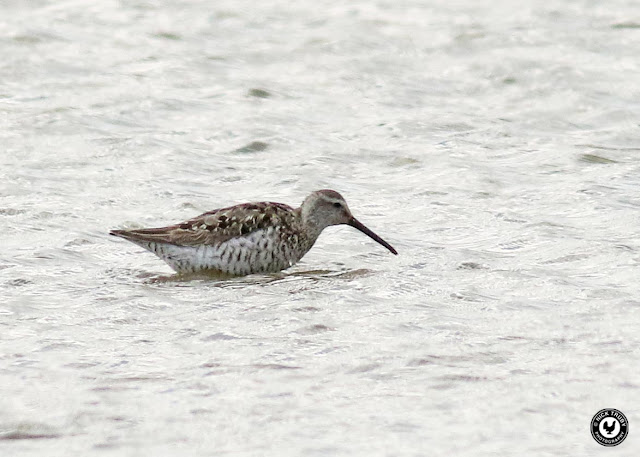This would be our 6th visit to Farmoor since claiming one of the yearly swipe cards for the exit barrier so another 4 and we'll be laughing all the way to the bank and, who knows, it could all kick off this week and we'll be quids in by next weekend! The weather looked promising (for birding), it had rained most of the day before and the reservoirs were being buffeted by a strong breeze as we made our way to the causeway, so I for one was hopeful of some good birds. F1, the smaller of the two basins, is usually a bit calmer than it's bigger twin F2 in windy weather and wading birds, if present, will use the north facing shelter of the causeway embankment to feed and rest up.
I noticed 20 or so Swifts flying quite high up above the sailing club, surely about to depart for warmer climes, but too high up for any photography. A mass of Sand Martins and House Martins were hawking just over the surface of the reservoirs and in particular F1. The wind was blowing stiffly from the west so the birds were held up when flying straight into it allowing for a little bit of advantage not normally gained when trying to capture these birds. I settled in for a short session with them. Hirundines by design are small birds and they move quickly so they need to be reasonably close in for any decent images but of course it is much more difficult to track birds moving at speed if they are close to you. But I tried, was delighted with some of the "back of the camera" shots, and then a tad disappointed as usual, when viewing the captures on the screen at home! Some of the better ones are shown here.
 |
| House Martins (top 3) and Sand Martins |
 |
| juvenile Dunlin |
 |
| "Canalag" Goose |
 |
| Egyptian Geese |
 |
| juvenile Knot |
The only time that the Knot seemed bothered by anything was when a Herring Gull flew low overhead and then it adopted a much more upright and alert posture. It soon settled down again and continued its foraging once the danger had passed.
After taking a couple of hundred shots (!) Mrs Caley decided enough was enough (!!) and we left the Knot to it. There were a couple of fine adult Little Grebes in this part of the reservoir and I fired off a few shots of a bird that I don't normally spend time on. The red neck and face of the grebes being particularly striking in the sunshine.
 |
| Little Grebe (and Coot, top) |
 |
| Common Sandpiper |
 |
| Turnstone |
 |
| juvenile and adult Swallow |
 |
| juvenile Dunlin |










































